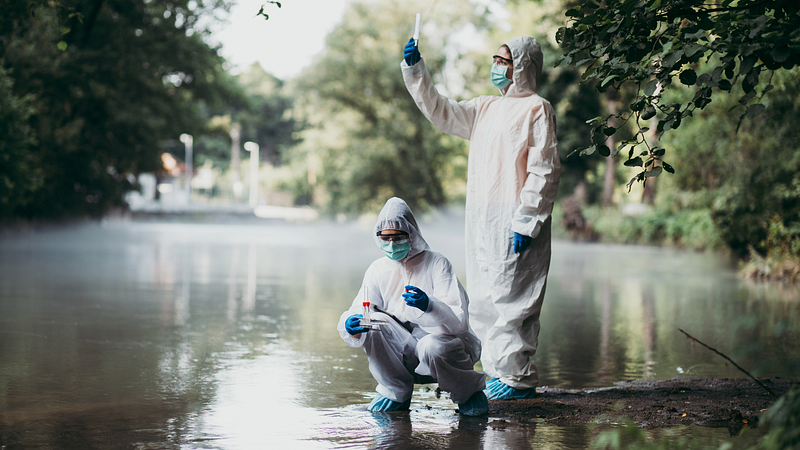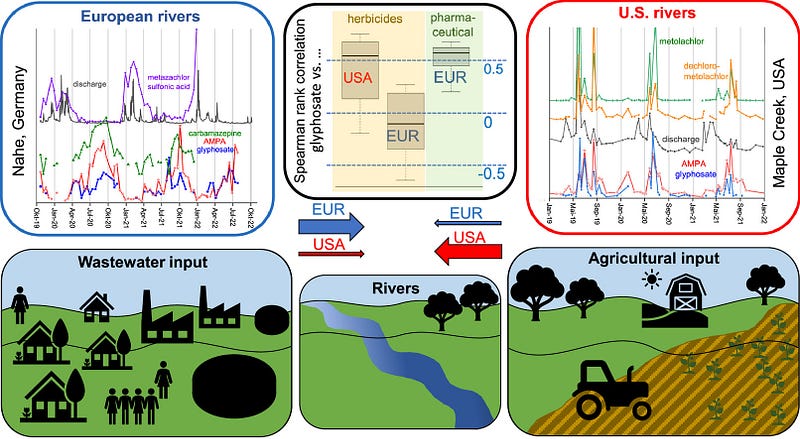Challenging Assumptions: Glyphosate Pollution Sources Unveiled
Written on
Understanding Glyphosate Pollution
Glyphosate, the most commonly used herbicide worldwide, has been widely recognized as a significant contaminant in rivers and waterways. While the potential health risks associated with this chemical, such as cancer and organ damage, are under investigation, it has long been believed that agricultural runoff was the primary culprit behind glyphosate pollution. Many campaigns have targeted farmers as the source of this issue.
However, recent research from the University of Tübingen suggests a surprising twist: urban wastewater, rather than agricultural practices, may be the leading contributor to glyphosate levels in European rivers.

In a groundbreaking study led by Professor Carolin Huhn, a comprehensive meta-analysis of data from various water protection agencies in Europe and the USA was conducted. Published in the journal Water Research, this study indicates that the glyphosate detected in European rivers primarily originates from urban sources, particularly wastewater treatment, rather than from agricultural fields.
Urban Sources as the Main Contaminants
Dr. Huhn and her team delved into long-term data spanning over two decades, collected from around 100 sites across Europe and the USA, focusing on glyphosate and its main breakdown product, aminomethylphosphonic acid (AMPA). They discovered that the patterns of glyphosate concentrations were closely linked to wastewater markers, which led to a reevaluation of previous assumptions about its sources.
This first video illustrates a villain who unintentionally does helpful things, drawing parallels to unexpected sources of pollution.
The researchers noted that glyphosate levels in European rivers peaked during the summer and decreased in winter, a trend inconsistent with agricultural application, which typically spikes in spring and fall. This seasonal fluctuation aligned more closely with substances known to enter waterways from wastewater treatment.
In contrast, data from the USA revealed a direct correlation between glyphosate concentrations and rainfall events following herbicide application, indicating agricultural runoff as the primary source there.

Hypothesis Testing and Initial Findings
The research team proposed that glyphosate in European rivers might be a breakdown product of aminopolyphosphonates, which are commonly found in laundry detergents and cleaning products. When treated in wastewater facilities, these compounds could decompose into glyphosate and AMPA.
Initial laboratory tests validated this hypothesis, demonstrating that glyphosate could indeed form from these detergent components under conditions typical of wastewater treatment facilities.
The second video discusses thinking like the "bad guys," mirroring the unexpected sources of pollution we often overlook.
As Professor Huhn articulated, “Our detailed analysis indicates that municipal wastewater significantly contributes to glyphosate levels. We must trace the sources of glyphosate to urban settings.”
Implications for Environmental Policy
This revelation raises critical questions regarding current environmental policies. If urban wastewater is a major contributor to glyphosate pollution, then strategies focused solely on reducing agricultural herbicide use may fall short. Regulatory bodies may need to monitor and potentially regulate the use of aminopolyphosphonates in consumer products.
This study highlights the intricate nature of environmental pollution, emphasizing the necessity for a comprehensive approach that considers multiple sources of contaminants. It serves as a reminder that our everyday choices, like laundry practices, can have significant environmental repercussions.

Conclusion: A Call for Awareness and Action
The findings from this research underscore the interconnectedness of human activities and natural ecosystems. The link between household products and river pollution exemplifies how domestic practices can lead to serious environmental consequences.
Addressing these pollution challenges will require innovation, collaboration, and a willingness to rethink traditional assumptions. As we strive to enhance water quality and protect our natural environments, this study opens new avenues for effective pollution control strategies that account for all potential contamination sources.
The surprising link between glyphosate in European rivers and household detergents invites a reexamination of how we approach environmental management, reminding us that even small everyday actions can have profound impacts.